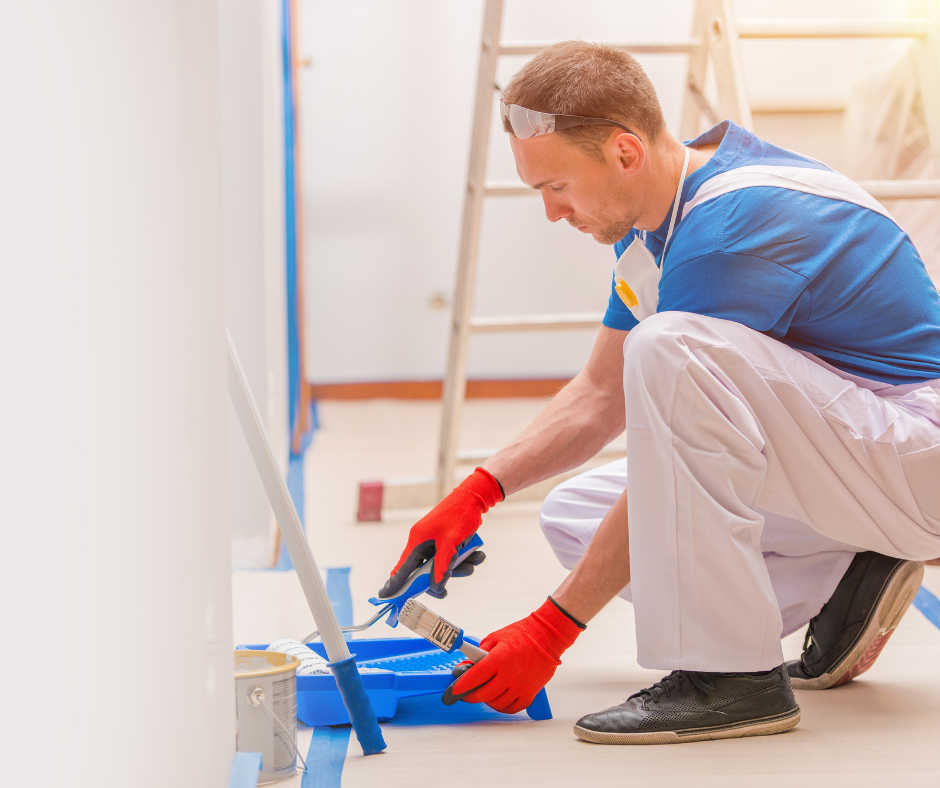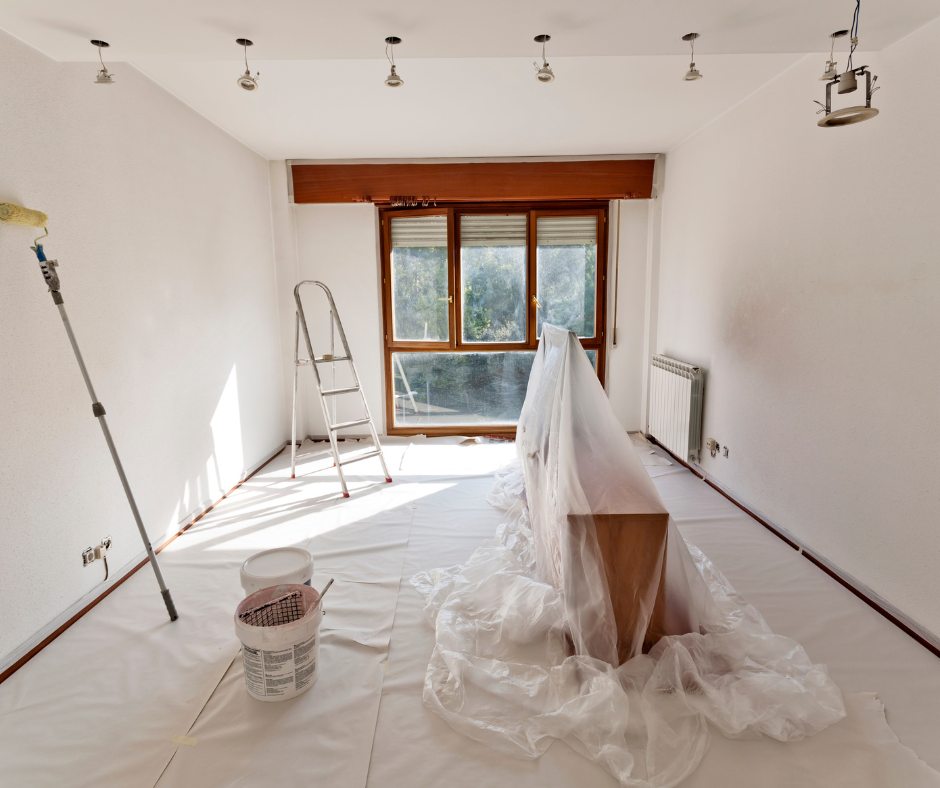It’s a lot of work to put a new coat of paint on a wall. We get that you’d want to spend time there as soon as possible, enjoying the new color and sense of freshness. The problem is that paint can give off noxious fumes that can cause you breathing problems.
You’ll want to give your room a little time to let the fumes clear before you go back in. There are things you can do to reduce how long. Getting air into a room is a big way to cut the amount of time you need to stay away.
There’s a little more to it, of course. By the end of this article, we hope that you have a better idea of how long you need to stay out of a room and what you can do to get into it more quickly. We hope you find it helpful.
In This Article We'll Discuss
How Long After Painting a Room Is It Safe?

There are several things to consider in knowing how long it’ll be before a freshly-painted room is safe to enter. The most important thing is knowing what is making it unsafe, which is the fumes given off by the paint.
Volatile Organic Compounds are chemicals released by paint components. They aren’t dangerous in the sense that one whiff and you’re on the floor. Breathed in over long periods, you can develop breathing and nerve problems. So, best to avoid any exposure.
VOCs are highest in oil-based paints, which are the most commonly used interior paints. Almost none are contained in water-based paints, which cuts the amount of time you’d need to stay out almost to zero. Water-based paints, however, are less durable and fade faster
If you use oil-based paint, prepare to avoid the room for a full day. This is usually enough time for most of the VOCs to seep out of the paint.
You can cut the amount of time you need to stay out of the room if you open windows or run your central air in the room. The more you turn over the air in the room, the sooner it will get safe.
How Long Should You Stay Out of a Room After Painting?

One thing that will affect the amount of time you need to stay out of a room is what kind of paint you use. Oil-based paints release the highest levels of fumes related to health problems, while water-based paints release almost none.
So, if you’re using water-based paint, you only need to stay out until the paint is dry. The reason for that isn’t the fumes, but in case you brush up against the wall and ruin your work. For oil-based paint, you’ll need to stay out for 24 hours.
That is assuming you don’t use some kind of ventilation. If you open a window and run a fan, you can cut that to about eight hours. If you just run an air conditioner to exchange the air, it’s about 16 hours.
Of course, you should wait for the paint to dry, too.
Is It Safe to Paint in a Closed Room?

You might find it necessary to paint in a closed room. Maybe you have playful pets or small children. While it isn’t the safest thing to do, there are ways you can paint in an enclosed room while safeguarding your health.
The first is to open a window if you can. Open doors allow the air in your room to get swapped out with air in nearby rooms. The second-best thing is to open a window. If it’s a breezy day outside, it’s all the better.
If you can’t open a window – maybe you’re in a room without them, or it’s prohibitively hot or cold outside – you can wear a respirator. A regular mask won’t cut it. You need something specially designed to remove volatile organic compounds (VOCs) from the air.
You can also use no- or low-VOC paint. These are usually water-based paints. They aren’t as durable, but they also don’t contain the chemical compounds associated with VOC emissions.
How Do You Ventilate a Room After Painting?

Once you’re done painting, properly ventilating a room will speed up how quickly you can get in and enjoy the fruits of your labor. Ventilation will reduce concentrations of the hazardous fumes given off by paint.
Proper ventilation involves replacing the air in the room with fresh air, not just recirculating the air already in the room. So you’ll need to open doors and windows.
Opening windows is best, because rather than just the air in the next room over, you’ve got all the air outside. If you can open two windows on opposite walls, you’re more likely to get a fresh breeze blowing through. You can also stimulate a breeze by running a fan.
Opening doors into the room also works if you don’t have pets or small children who might brush up against a wet wall.
The slowest option is to run central air in the room. It’s better if you have a return intake in the room because that will suck the air directly from the room to run it through filters and then disperse it throughout your home.
The slowest way is to just pump fresh air in. Sure, it’s free of VOCs, but you need to get the air with heavy VOC concentrations out of the room.
How Do You Get Rid of Paint Fumes?

There are a handful of ways you can reduce paint fumes that will help reduce the amount of time you need to stay away from a newly-painted room.
Prevention is always the first, best way to get rid of paint fumes. Look for low-VOC emission paints. VOCs, volatile organic compounds, are the harmful chemicals in paint fumes. These are in the highest concentrations in oil-based paints. Water-based paints have low concentrations.
The easiest way to get rid of fumes already in the air is through proper ventilation. Swap out the air full of fumes for fresh, clean air. You can achieve this by opening a window and running a fan, keeping the doors open, or running a central air unit.
In addition, lighting candles in the room will help burn the paint fumes. The air isn’t so thick with them that it will catch the air on fire, fortunately. Don’t leave burning candles unattended, especially if you have kids and/or pets.
Putting buckets of water in the room will also help remove some fumes. It isn’t terribly effective, but it works as an additional measure.
Conclusion
A good rule of thumb is that once you’ve painted a room that you should expect to stay out of it for a day. That will give the harmful fumes contained in paint a chance to dissipate.
If you want to get into that room sooner, our suggestion is to let the air be your friend. Ventilate that room and fill it with fresh air. You can do that by opening windows and doors, and by running a central air system.
We hope you feel a little more confident in knowing how to stay safe after you’ve painted a room. If you do, feel free to leave a comment down below. You can also share this article on your social media networks.

